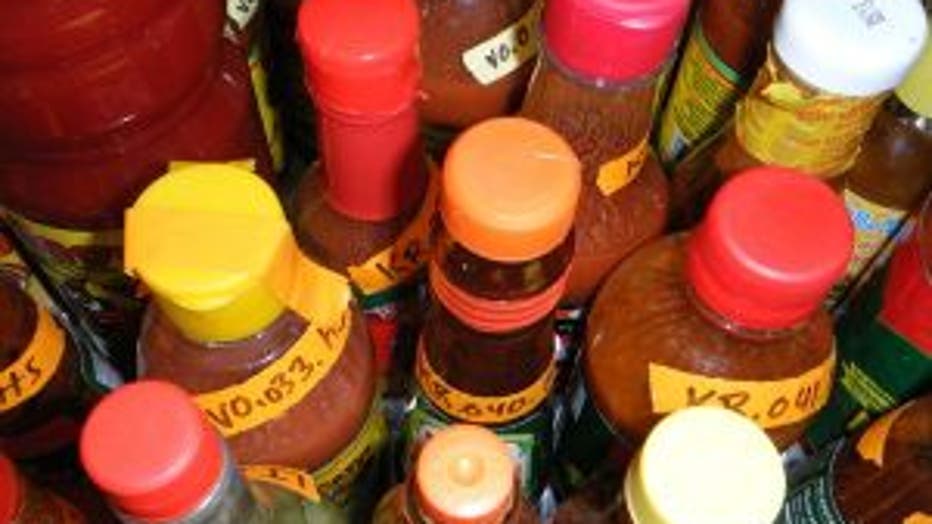Hot and heavy? Hot sauces contain dangerous metal
LOS ANGELES -- So you like your hot sauce south-of-the-border spicy, with that extra punch?
Well, Nevada researchers have found that little added twang might not be an intended result of the recipe: Many imported hot sauces sold in the U.S. contain dangerous levels of lead, according to a what is billed as a first-of-its-kind environment and food study.
Shawn Gerstenberger, lead researcher for the University of Nevada-Las Vegas study, told the Los Angeles Times that there are no U.S. government standards for the amounts of lead in hot sauce brands.
UNLV researchers tested 25 bottles of hot sauce imported from Mexico and South America. The products were bought in the U.S. at ethnic markets and grocery stores. Four bottles, or 16% of the sample, exceeded U.S. Food and Drug Administration standard for safe levels of lead. The product packaging was also tested because lead in packaging has been known to leach into food.

The results were published earlier this year in the Journal of Environmental Science and Health and recently publicized by the university.
Gerstenberger said lead poisoning can invade all the body’s organs and is responsible for learning disabilities and behavioral problems in young children. Researchers acknowledged that many children probably steer clear of hot sauce, but said it is a staple of some ethnic diets.
“We’ve been working quite some time looking at child lead poisoning,” he told The Times. “For children, there are no acceptable levels of lead. There are thousands of brands of imported hot sauce for sale out there, so this study is just a start.”
Gerstenberger said the study took place almost by accident: UNLV Researcher found in 2006 that Mexican-style candies containing chile peppers and salt also contained high lead levels. That study helped bring about the removal of some imported candies from grocery store shelves.
“Candies from Mexico often contain high amounts of lead from their peppers and salt, which are the same ingredients in hot sauce,” he told The Times. “Since the two products often sit next to each other on the shelves, we figured we should take a look at the hot sauce.”
For more on this LA Times story, click here.

